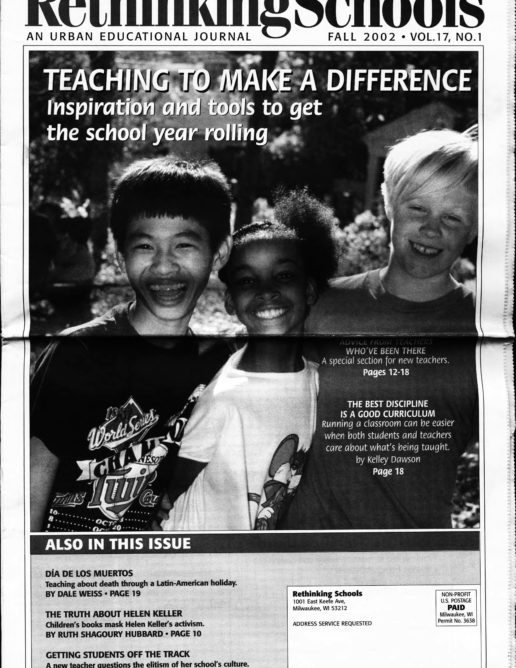Remembering Tyson
I’ll never forget the first time I met Tyson. It was my first day at Decatur Elementary School in Seattle and I was eager to get to know the students. Tyson approached me and with grin a mile wide, said, “Hi! My name is Tyson. Who are you?”
I told him my name and asked how his first day of school was going. He responded, “Great! I’m in first grade and I have lots of friends!” When I asked him the names of some of his friends, he said, “Oh I don’t know their names. But I know they are my friends. And that’s more important anyway.”
Soon Tyson began visiting my second/ third grade classroom. One day Jason, a third grader in my classroom, mentioned that Tyson was his brother. Since I don’t learn names very quickly, I had not noticed that Tyson and Jason both had the same last name. In the weeks that followed, I was surprised to find that Tyson and Jason were twins. Because of health complications that had also impaired Tyson’s cognitive functions, he was in the first grade while Jason was in third grade.
Tyson had been born without a kidney, and they were still searching for a match. He had numerous health complications and operations in his eight years of life. He had a slight limp and his feet were turned inward. His stature was short and seemingly bloated. His gait was somewhere between a walk and a waddle.
Tyson drew people to him like a magnet. He loved having an audience; he was like a court jester. But he struggled academically. Lorna, his nurse, accompanied him to classes and assisted him with his schoolwork; he also received special education and speech therapy services. Despite the many physical and mental challenges he faced, the other students easily accepted Tyson as he was.
The following year, I changed grade levels and taught in a third/fourth grade classroom and, at their parents’ request, both Tyson and Jason were in my class. In early January of that year, Tyson’s family received news that a match had been found for a kidney transplant. After a month or so of recuperation, Tyson returned to school and on his first day back announced, “I am a new man!”
He was able to run unencumbered by no longer having to use a colostomy bag that he had needed for most of his life. He had even more energy than before. He acted like he had conquered the world. In many ways, he had. Sadly, Tyson died a few months later from a terrible virus that hit Seattle. The irony that he lived more than eight years without a kidney, survived a kidney transplant, and then died from a flu virus is something I still find hard to comprehend.
In the days following Tyson’s death, my students asked many questions. “Where is Tyson now?” “Do you think they have extra kidneys where he is in case this one doesn’t work?” “Do you think Tyson is thinking about us as much as we are thinking about him?” Because Jason was in our classroom, I wanted to find a delicate balance between allowing students to process their feelings about Tyson’s death and resuming some sense of normalcy in our classroom.
The students decided to make a diorama-altar for Tyson. Many wrote letters to Tyson, expressing how much they missed him and had learned from him. We placed photos and drawings of Tyson in the altar, along with small mementos students felt were important to him. One student put together a folder for Tyson of school assignments “in case he wants to keep learning with us.” Even though his desk had been cleared out and work folders given to his parents, Tyson remained very real to the students for the remainder of the school year.
When we began our unit on Día de los Muertos, my intention was to provide a culturally rich experience for my students. Little did I know that exploring the topic of death and dying would provide the grounding through which to share our grief and celebrate the life of a cherished student.

